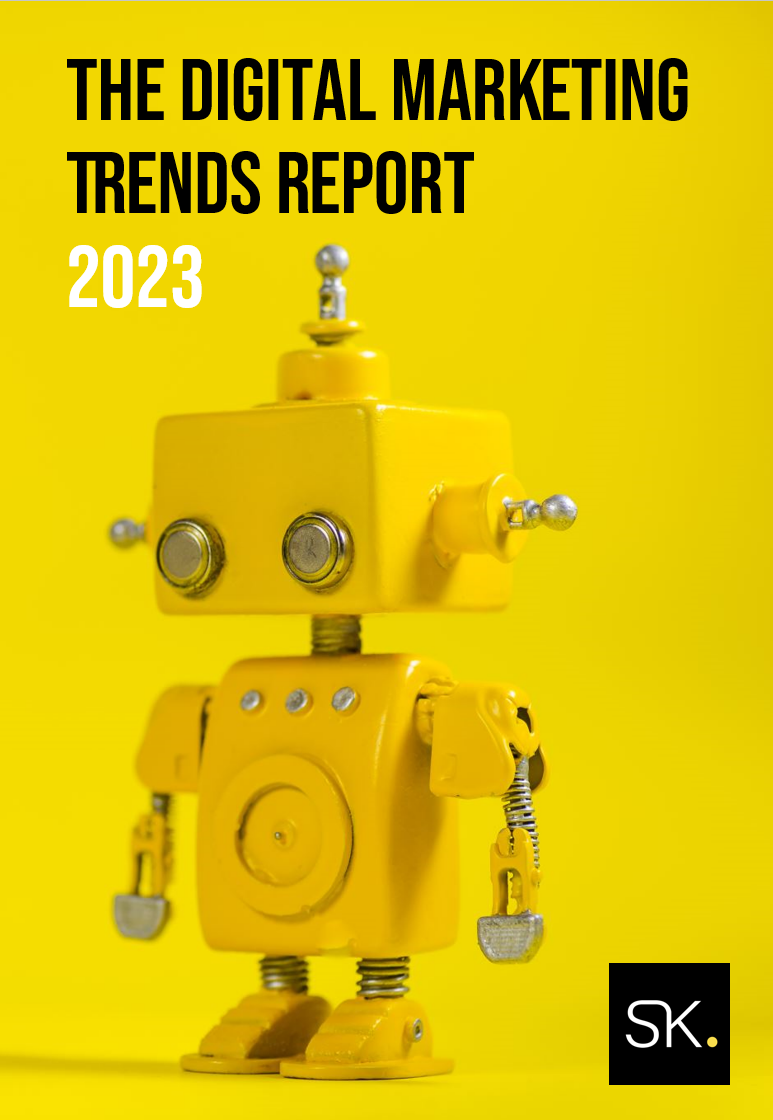Gamification in marketing is the concept of using game elements and mechanics to incentivise customers to be more engaged with aproduct or service. It is seen within advertising, rewards programs, content marketing, and other types of marketing campaigns. It helps to drive conversions, increase brand awareness, and meet other business objectives.
This guide will discusshow to leverage gamification, the benefits onecan expect to see, and best practises for designing a gamification plan.
What is Gamification?
The term ‘gamification’ is derived from the fields of psychology and behavioural economics. It is based on the principle of operant conditioning, which states that when an action is rewarded, it tends to be repeated and when punished, it tends to be avoided. This concept was applied to game design in the 1970s and 1980s, as designers sought ways to make players more engaged. By offering players rewards and incentives, they found that it increased the likelihood of them returning to the game.
The concept of gamification has evolved over time to include elements such as leader boards, achievements and virtual currencies. These are all designed to increase engagement by rewarding users for completing certain tasks or reaching certain milestones. Gamification can also involve integrating real-world items in the game, such as physical fitness tracking devices; by combining elements of gaming with aspects of everyday life, gamification can help to encourage users to stay engaged and motivated.
Essentially, gamification is the application of gaming principles to scenarios that are not games; in marketing, it is used as a means to entice and retain customers.
The behavioural science behind gamification is also behind the social media addiction in consumers. For example, when a user posts content that becomes popular, they are rewarded with greater visibility. This triggers a cycle in which users create more and more content in order to continue gaining rewards (the rewards in this case not only being more visibility but likes, attention, the alleviation of boredom, ad so on).
Another example is the use of variable rewards – a powerful concept in which users are rewarded at unpredictable intervals and the rewards themselves can also vary. An example of this at work in social media is when users scroll through feeds; while many posts may not capture their interest, some will – and it is the reward of seeing a post that entertains them that keeps them scrolling for much longer than they intended to when they picked up their device.
Whilst the psychology involved in gamification is more complex than simple operant conditioning, businesses can implement gamification without going into the psychology in-depth. On the other hand, there are gamification consultants that can design for complex systems and user journeys, such as those involved in app design.
The Benefits of Gamification in Marketing
The gamification market is projected to be worth $30.7 billion by 2025, up from $9.1 billion in 2020 – and for good reason. Many companies have reaped the benefits of this technique, such as Target, whose app for creating Christmas wish lists generated 75,000 downloads and 100,000 wish lists, equating to potential sales of $92.3 million.
Volkswagen China used gamification principles back in 2012 in its campaign where it crowdsourced ideas for its product line. Users visited the website to submit ideas and several winners were selected. VW gained insights into what this target market wanted, and the campaign generated 33 million website visits, maintaining brand awareness.
One survey discovered that the top reasons marketers include interactive content were educating the audience, engagement, lead generation, brand awareness, and conversion. In addition, 88% of marketers agreed that using such content helped to differentiate them.
Gamification improves customer experience. Customers are more likely to complete actions and engage with a brand when they are incentivised, and gamification adds more fun into the customer experience, helping customers associate those positive emotions with the brand that elicited them and ultimately, improving CLV.
Gamification can also help increase intrinsic motivation. All of us want to do things that we find enjoyable or are motivated to do by a sense of achievement. Marketing messages that only focus on extrinsic motivation will have some success, but a gamified experience that focuses on intrinsic motivation makes it easier for customers to continue using a product or platform. A prime example of this is the app by Nike, discussed below.
More Examples of Gamification in Marketing
There are endless examples of gamification in marketing. Hotels use it in their strategies by adding game elements to their rewards programs. Customers may be rewarded for visiting a certain number of properties, staying at a particular hotel for a certain number of days, or making a certain number of stays. They may also unlock additional benefits after reaching certain spending milestones. Online travel agents such as Booking.com and Expedia use such techniques, assigning users ‘levels’ when they reach milestones.
Starbucks’ loyalty program is multi-tiered, where customers unlock a new level of rewards after earning points. They can win extra points and offers by paying using the Starbucks Rewards Visa Card in various stores, enabling them to earn points on other purchases. Customers can also play games to earn points, such as the famous ‘Starbucks for Life’ program as well as ‘Star Days’, the week where customers win rewards by playing arcade games.
Another great example is the Nike Run Club app. Users can set up and monitor their own personalised training regime as well as compete in challenges, winning badges and trophies. They can also create and participate in community challenges with friends and family.
The app also tracks metrics and provides training tips; this, combined with invoking community spirit and competition provides genuine value to the user and keeps customers returning to the brand.
Types of Gamification
Gamification comes in simple and complex forms. The most accessible and easy-to-implement type can simply involve elements such as checklists and progress bars. In such cases, the user is rewarded by completing simple actions; being presented with a trigger (i.e., a list to be checked off) opens a reward loop which the consumer feels compelled to close by completing the set of actions. Articles that contain progress bars as users scroll down the page are another simple example that will keep users engaged in the content.
Another form of gamification involves creating competition between teams or individuals. This may include contents and elements such as leader boards. However, the competition does not always need to involve comparison with other users; simply ‘unlocking’ access to new levels of a rewards program triggers the drive to ‘win’.
The user of gamification in advertising has also proven to be worthwhile. Referred to by some as an ‘advergame’, the marketing message is embedded into a game. Gamification is also be used in
experiential marketing; it may involve physical, in-person events, but may also be done using VR and AR.
Best Practices for Gamification
To begin gamifying their marketing strategies, businesses must first define the objectives of the campaign, as this informs the behaviours that are to be reinforced. For example, if building a community is necessary for success, interaction amongst customers needs to be incentivised; if it is simply a case of increasing sales, then purchases and actions earlier in the funnel need to be incentivised.
It is also important to consider the target market and what type of gamification they will respond well to. Gamification will not always be appropriate in B2B interactions, but it can be. For B2C, consider the audience demographics such as their generation; there is a good chance that gamification will appeal more to members of Generation Z than boomers, for example.
There are a number of common mistakes made when creating a gamification campaign. One error is creating a gamified experience that focuses too much on the gameplay and not enough on moving the customer towards the business goal i.e., generating leads, sales, and so on. It is essential that gamification is thoroughly planned in order to avoid such occurrences.
One of the most important success factors is to use the right types of rewards. In some cases, one cannot go wrong with simple elements such as progress bars and checklists; however, designing a gamified rewards programs containing rewards that are of no real value to users will not be a success.
Various studies have also proven that negative reinforcement can be just as effective – and sometimes more so – than positive reinforcement. (Negative reinforcement is when an undesirable stimulus is taken away – such as the removal of the number of notifications a user has on an app icon. Users feel compelled to click on the icon so that the number will no longer be displayed; once the app is open, they start using it, despite their lack of intention to do so).
Gamification requires creativity, and it is important to personalise rewards where possible. Always test the user response to ensure gamification elements and rewards are effective, and adjust the strategy until a successful formula is found.
Finally, be transparent with customers about the experiences, how they work, and what rewards they will unlock. Not only will this motivate them to engage, but it will also manage expectations.
Conclusion
Gamification is a marketing technique projected to skyrocket in popularity. Whether the goal is to drive conversions, increase app usage, increase engagement with content, increase brand awareness, or reduce bounce rate, gamification has the potential to revolutionise one’s marketing strategy. It also provides a fun experience and creates positive associations with brands.
To begin creating a gamified experience, identify the target behaviours and research which rewards the target market will respond well to. Always ensure that the experience is moving the customer towards the end goal and that the gameplay does not detract from that. Personalise rewards as much as possible and be transparent with customers in order to manage expectations.
To discover how we’re helping businesses worldwide develop leading marketing strategies, contact us – we would be delighted to assist.



